ASUS ROG LGA1150 Lineup comes with two new boards - mini-ITX Maximus VI Impact and mid-range Maximus VI Hero.
ASUS Maximus VI Hero offers the build quality and some exclusive features like any other ROG board, but for more reasonable price.
In the past, those overclockers who wants a ROG board, but can't afford a price of flagship Maximus Extreme had only one possible option - Maximus Gene, even if they actually don't need mATX board.
Now they have another alternative in the list - Maximus VI Hero with ATX form factor and the price almost the same as Maximus Gene (currently Gene is only $5 cheaper than Hero newegg).
I had opportunity to test ASUS Maximus VI Hero for a while and now I bring the results to your attention.
Specification
Vendor: ASUS
Model: Maximus VI Hero
CPU Support: Intel Core i5/i7 LGA1150
System bus: DMI 2.0, 20 GBps
Chipset: Intel Z87 (Lynx Point)
RAM support: 4x DDR3 DIMM slots up to 32 GBytes with dual channel support
Expansion slots:
- 2x PCI-E 3.0 x16 (works in x16+x0 or x8+x8 mode)
- 1x PCI-E 2.0 x16 (works in x4 or x1 mode, depends on PCI-E 2.0 x1 slots usage)
- 3x PCI-E 2.0 x1
Multi-GPU support: SLI and CrossFireX - up to 2 video cards
SATA support:
- 6x SATA3 6 GBps ports (using Intel Z87 PCH)
- 2x SATA3 6 GBps ports (using ASMedia ASM1061)
eSATA support: none
mSATA support: none
RAID support: RAID 0/1/5/10 (using Intel Z87 PCH)
On-board LAN: Intel I217-V Gigabit Ethernet
On-board Sound: ROG Supreme FX Audio (Realtek ALC1150 7.1 Channel HD-Audio Codec)
USB 2.0: 4x ports in back panel + 4x internal ports (using Intel Z87 PCH)
USB 3.0: 4x ports in back panel + 2x internal ports (using Intel Z87 PCH)
IEEE 1394 support: none
System monitoring: Nuvoton NCT6791D
Power connectors: 1x ATX 24-pin and 1x 8-pin EPS12V
Board size: 305x244-mm
Form factor: ATX
Price: $215 USD
Box and accessories
Box of the ASUS Maximus VI Hero has similar design as other ROG board with red color, but there is no carrying handle.
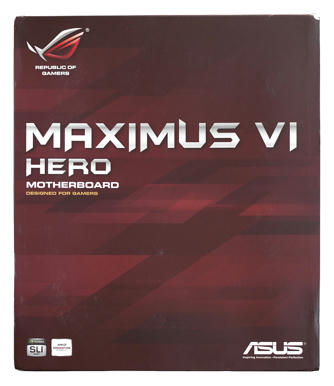
(click on any picture to see full size version)
If you throw off upper part of the box you can see the motherboard through plastic window.
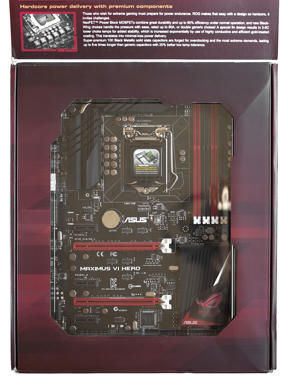
The board itself is packed in a separate box.
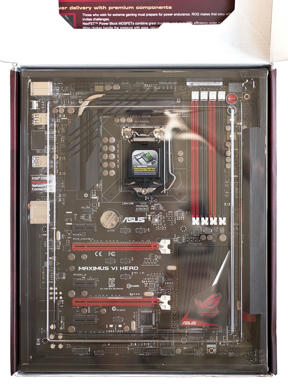
Items bundled with the board:
- User guide;
- Driver and software DVD;
- Back panel I/O Shield;
- SATA 6 GB/s cables (6 pcs);
- Flexible SLI bridge;
- ASUS Q-Connectors;
- stickers for SATA cables;
- ROG door hanger;
PCB design and features
ASUS Maximus VI Hero is standard 305x244-mm ATX board that uses back and red colors for slots and connectors.
You can connect CPU cooler fans to one of two 4-pin connectors and case fans to another three 4-pin connectors.
Speed of all connected fans adjustable via BIOS or ASUS AI Suite III.
Front side of the board:
Back side of the board:
ASUS Maximus VI Hero without heatsinks:
ASUS Maximus VI Hero has Socket 1150 that supports 4th generation of Intel Core CPUs.
Extended space between CPU socket and first PCI Express x16 slot allows you to use huge CPU heatsinks and descrite graphics card at the same time.
There is CPU socket baclplate and CPU VRM baclplate on the back side of the board.
Four DRAM slots supports up to 32 GBytes of DDR3 memory (up to 8GB for each slot/module) working in dual channel with 1066-2800 MHz speed.
You can check ASUS Maximus VI Hero DRAM QVL list here: http://dlcdnet.asus.com/pub/ASUS/mb/...H_DRAM_QVL.pdf
Expansion cards can be installed in six PCI Express slots - two PCI-E 3.0 x16, one PCI-E 2.0 x16 and three PCI-E 2.0 x1.
Both PCI-E 3.0 x16 red slots connected to integrated Haswell PCI Express controller and can be working as 16+0 or 8+8 depents on second slot usage.
The rest four black slots connected to Intel Z87 PCH.
PCI-E 2.0 x16 slot works in x4 mode only if all three PCI-E 2.0 x1 slots is empty.
In case if any of PCI-E 2.0 x1 slots is used - PCI-E 2.0 x16 will work in x1 mode.
Four ASMedia ASM1480 used to switch 8 PCI-E lanes between PCI-E 3.0 x16 red slots.
Two ASMedia ASM1440 used to switch 3 PCI-E lanes between PCI-E 2.0 x16 and PCI-E 2.0 x1 black slots.
Back panel interfaces includes:
- 1x PS/2 combined mouse/keyboard port;
- 4x USB 2.0 ports;
- 1x BIOS Flashback button;
- 1x HDMI-out;
- 1x optical SPDIF-out;
- 1x LAN interface;
- 4x USB 3.0 ports;
- 6x in/out 3.5-mm mini-jack for HD Audio Codec.
There is eight SATA ports and all of them can works at 6 GBps speed.
Six SATA ports (SATA6G_1 - SATA6G_6) connected to Intel Z87 PCH and the rest two (SATA6G_E1 - SATA6G_E2) - using ASMedia ASM1061 SATA controller.
Intel I217-V Gigabit Ethernet controller
To reduce EMI, ASUS ROG Supreme FX Audio separated with "red line" from rest part of the board.
Realtek ALC1150 7.1 Channel HD-Audio Codec protected by cover.
There is nine LEDs makes red illumination on the back side of the board.
Intel Z87 PCH
LED-poster and three buttons (start, reset and MemOK!) in the right upper corner of the board.
DirectKey button in the right lower corner of the board.
Nuvoton NCT6791D - Hardware monitoring IC.
Parade PS8201A - 3.0Gbps HDMI Repeater / Level Shifter.
Winbobd W25Q64FV SPI flash used for BIOS image.
VRM design
ASUS Maximus VI Hero uses one ATX 24-pin and one EPS-12V 8-pin power connectors for input power from PSU.
CPU VRM uses 8-phase design.
CPU Inpur Voltage controller is ASUS DIGI+ APS1251.
Eight International Rectifier IR3535MPBF drivers on the back side of the board.
Eight Texas Instrument CSD87350Q5D NexFET.
Nichicon FPCAP 10K black metallic capacitors and ASUS BlackWing chokes.
Memory VRM is 2-phases and uses ASUS DIGI+ ASP1103 controller
Richtek RT8100A voltage controller.
There is also three programmable current DAC (marked as "S11") that allows to regulate some secondary volltages in BIOS and software (ASUS TurboV Core).
As you can see, ASUS Maximus VI Hero VRM similar to ASUS Maximus VI Extreme VRM.
At least the most important part of it (CPU VRM and DRAM VRM) completely the same.
Heatsinks
ASUS Maximus VI Hero uses passive cooling systems consisting of two heatsinks and backplate.
Two parts of CPU VRM heatsink connected with one copper heatpipe:
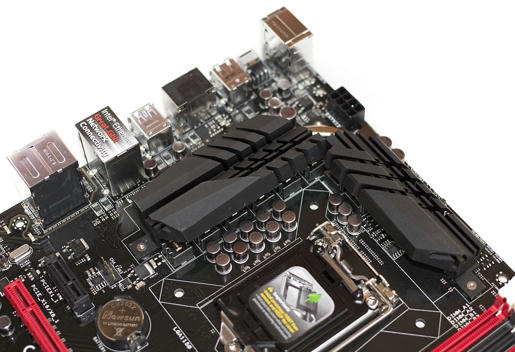
Intel Z87 PCH heatsink made of aluminium with ROG logo on top:
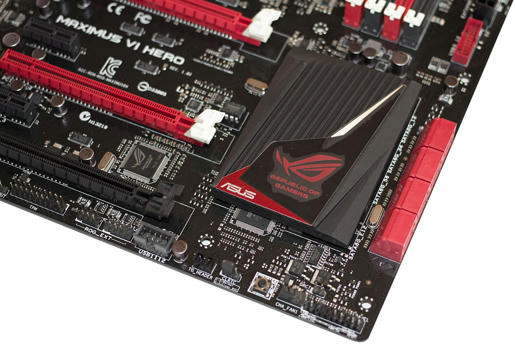
CPU VRM backplate covers IR3535MPBF drivers:
ASUS Maximus VI Hero cooling systems is also almost the same as set on ASUS Maximus VI Extreme, except that there is no PLX PEX8747 switch (and no extra heatsink for it) and slightly smaller surface area of VRM heatsink (smaller quantity of kerfs).
UEFI BIOS features
The board was tested with BIOS version 0020 [14-Jun-2013].
Here is archive with complete set of ASUS Maximus VI Hero screens: asus_maximus_vi_hero_bios_screens.rar
And BIOS profile for Core i7-4770K OC to 4500 MHz: asus_maximus_vi_hero_i7-4770k_4500mhz_bios_profile.rar
Default BIOS page for ROG boards is Extreme Tweaker in Advanced Mode, but you can switch to EZ BIOS Mode as well.
EZ BIOS Mode: here you can see CPU and memory info, adjust fan speeds, change performance profile and boot order.
My Favorites: here you can store your favorite options for quick access.
Available hotkeys in BIOS:
ESC - Exit menu
F1 - Help
F2 - Load previous settings
F3 - Shortcut
F4 - Add shortcut to My Favorites
F5 - Load optimized default settings
F7 - Switches to Advanced mode from EZ mode)
F8 - Boot menu
F10 - Save changes and reset
F12 - Print Screen (make screenshot and save it to any connected storage device)
Extreme Tweaker: all for overclocking - clocks, multipliers, voltages and timings.
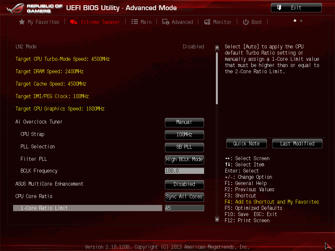
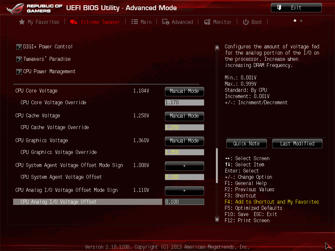
Voltages can be adjusted in these intervals:
- Input Voltage (VCC_IN): 0.800V to 2.440V, step 0.010V;
- CPU Core Voltage (Vcore): 0.001V to 1.920V, step 0.001V;
- CPU Cache Voltage (Ring Bus Voltage): 0.001V to 1.920V, step 0.001V;
- CPU Graphics Voltage (Vigpu): 0.001V to 1.920V, step 0.001V;
- DRAM Voltage (Vddr): 0.001V to 1.920V, step 0.001V;
- System Agent Voltage (VCC_SA): can be set as offset from -0.999 to +0.999 step 0.001V;
- Analog I/O Voltage (analog VCC_IO): can be set as offset from -0.999 to +0.999 step 0.001V;
- Digital I/O Voltage (digital VCC_IO): can be set as offset from -0.999 to +0.999 step 0.001V;
- PCH Core Voltage: 0.700V to 1.800V, step 0.00625V;
- PCH VLX Voltage: 0.800V to 2.000V, step 0.00625V;
- VTTDDR Voltage: 0.600V to 1.400V, step 0.00625V;
- DRAM CTRL REF Voltage: can be set as multiplier from 0.395x to 0.630x step 0.005x;
- DRAM DATA REF Voltage: can be set as multiplier from 0.395x to 0.630x step 0.005x;
- PLL Termination Voltage: 0.000V to 3.000V, step 0.00625V.
DRAM Timing Control: still a lot of settings, but unlike other ROG boards there is no pre-configured profiles for various memory types.
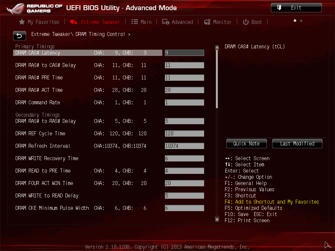
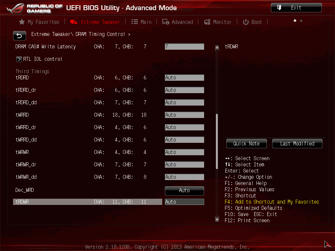
DRAM timings can be adjusted in these intervals:
- CAS Latency (tCL): 1-31;
- RAS to CAS Delay (tRCD): 1-31;
- RAS Precharge (tRP): 1-31;
- Cycle Time (tRAS): 1-63;
- Command Rate (CMD): 1-3;
- RAS to RAS Delay (tRRD): 1-15;
- Refresh Cycle Time (tRFC): 1-511;
- Refresh Interval (tREFI): 1-65535;
- Write Recovery Time (tWR): 1-16;
- Read to Precharge Time (tRTP): 1-15;
- Four Act Win Time (tFAW): 1-255;
- Write to Read Delay (tWTR): 1-15;
- CKE Minimum Pulse Width: 1-15;
- CAS Write Latency (tCWL): 1-31;
- tRRSR: 1-7;
- tRRDR: 1-15;
- tRRDD: 1-15;
- tWRSR: 1-63;
- tWRDR: 1-15;
- tWRDD: 1-15;
- tWWSR: 1-7;
- tWWDR: 1-15;
- tWWDD: 1-15;
- tRWSR: 1-31;
- tRWDR: 1-31;
- tRWDD: 1-31.
Main: here you can see system info, select language, system date and time, set/drop admin/user password.
Advanced: all options related to CPU/PCH and various onboard controllers.
Monitor: here you can control the fans connected to motherboard and see current voltages, temperatures and fan speeds.
Boot: here you can change boot order, select mode for DirectKey button and default BIOS mode (EZ or Advanced).
Tool: here you can update BIOS image, secure erase your SSD, store/load BIOS setings to/from profiles, see SPD memory info and change options values for OC Panel H-Key.
Testbed
The board was tested in open stand with that configuration:
CPU: Intel Core i7-4770K C0 (Haswell), 3500 MHz, Socket 1150
Motherboards:
- ASUS Maximus VI Hero, Intel Z87, BIOS 0020 (14 июня 2013);
- ASUS Maximus VI Extreme, Intel Z87, BIOS 0021 (14 июня 2013);
- ASUS Gryphon Z87, Intel Z87, BIOS 3009 (24 мая 2013);
- Intel DZ87KLT-75K (Kinsley Thunderbolt), Intel Z87, BIOS 0334 (8 мая 2013);
RAM: GeIL EVO Corsa GOC316GB2400C11QC (Samsung K4B2G0846D-HCH9) DDR3-2400 4x4 Gb
VGA: Intel HD Graphics 4600
SSD: Corsair Neutron GTX 120Gb (firmware M206)
PSU: Corsair Professional Series Gold AX1200 (CMPSU-1200AX) 1200W
Thermal interface: Arctic Cooling MX-4
CPU cooler: Thermalright Archon + 2x Thermalright TY-140 140-mm fans.
Drivers and software used:
- Windows 7 Service Pack 1 x64 v6.1.7601;
- Intel Chipset Device Software v 9.4.0.1017;
- Intel Management Engine Driver v9.5.0.1428;
- Intel Rapid Storage Technology Driver v12.6.0.1033;
- Intel HD Graphics driver v15.31.7.3131;
- Intel USB 3.0 Driver v2.5.0.19;
- CPU-Z v1.64.1;
- GPU-Z v0.71;
- LinX v0.6.4 + updated linpack_xeon64.exe from Linpack v10.3.11.019;
- Final Wire AIDA64 Extreme Edition v2.85.2454 beta;
- MaxxMEM v1.99;
- Super PI / mod v1.6;
- Hexus PFfast v4.1;
- wPrime v1.55;
- WinRAR v5.00b2 x64;
- Cinebench R11.5
- UnRAR-crack Benchmark 2011;
- Fritz Chess Benchmark.
Overclocking results
My 4770K can do 4500MHz 1.17V on air, but it need ambient air temp around +25?C foer that.
Now it's summer here and ambient air temperatures goes to 30?C (and sometimes even higher).
Not the best time for overcloking with aircooling.
In that conditions CPU can pass 10 minute LinX test only with 4400 1.15V.
But it still able boot Windows at 5 GHz 1.30V all cores enabled + HT:
And 5 GHz 1.28V after disabling 2 cores and HT:
Working BCLK range with default 5/5 REG/DMI ratio (CPU Strap = 100): 100-116.5 MHz
Working BCLK range with 4/5 REG/DMI ratio (CPU Strap = 125): 125-136 MHz
Working BCLK range with 3/5 REG/DMI ratio (CPU Strap = 166): 166-192 MHz
Memory OC with all four modules: 2716 MHz 10-12-12-28 1T.
And with only two modules: 2869 MHz 12-14-14-35 2T.
Performance
Performance measures in two modes - stock clocks and stable CPU OC on air cooling to 4500 MHz.
For comparison I used three Z87-based boards (ASUS Maximus VI Extreme, ASUS Gryphon Z87 and Intel DZ87KLT-75K) and one Z77-based board (ASUS Maximus V Extreme with i7-3770K CPU).
Z77+3770K stock mode settings: 3700-3900 MHz 1.000V CPU (Turbo Boost enabled), 1150 MHz iGPU
Z77+3770K OC mode settings: 4500 MHz 1.30V CPU, 1650 MHz 1.35V iGPU
Z87+4770K stock mode settings: 3700-3900 MHz 1.017V CPU (Turbo Boost enabled), 1250 MHz iGPU
Z87+4770K OC mode settings: 4500 MHz 1.15V CPU, 1800 MHz 1.35V iGPU
Memory runs with the same setting on all boards and both stock and OC modes - 2400 MHz 9-11-11-28 1T 1.80V 4x4Gb in Dual Channel mode.
Secondary timings:
- RAS to RAS Delay (tRRD): 5;
- Refresh Cycle Time (tRFC): 120;
- Refresh Interval (tREFI): 10374;
- Write Recovery Time (tWR): Auto;
- Read to Precharge Time (tRTP): 4;
- Four Act Win Time (tFAW): 20;
- Write to Read Delay (tWTR): Auto;
- CKE Minimum Pulse Width (tCKE): 6;
- CAS Write Latency (tCWL): 7;
Tertiary timings:
- ASUS Maximus VI Hero: Auto (6-6-7-18-4-4-4-8-7-17-14-11-11-11-2-2)
- ASUS Maximus VI Extreme: Auto + Samsung 4x4Gb profile (4-5-6-20-5-4-4-7-7-27-14-13-13-13-2-2)
- ASUS Maximus V Extreme: 1-3-3-3-5-5-1-4-5-0
- ASUS Gryphon Z87: Auto
- Intel DZ87KLT-75K: Auto
Performance of all Z87-based boards is close in all benchmarks.
The only exception is memory performance - in AIDA64 and MaxxMEM we have two leaders: ASUS Maximus VI Extreme and Intel DZ87KLT-75K.
Power consumption
Power consumption of the whole system "from the wall" measured using UNI-T UT71E with power adapter.
All settings was the same as used for perfformance testing.
Conclusion
Pros:
[+] ROG board with reasonable price ($215) and ATX form factor.
[+] Uses the same components in CPU/DRAM VRM as Maximus VI Extreme.
[+] Design. Extended space between CPU socket and higher PCI-E x16 slot allows you to use huge CPU heatsinks and graphics card working in x16 mode at the same time. Also you can set two graphics cards that uses 3-slot cooling system.
[+] Start and reset buttons, LED-poster and OC Panel support.
[+] 2-Way SLI/Crossfire support.
Cons:
[-] No ROG Connect technology support.
[-] CPU Core Voltage and DRAM voltage limited by 1.92V.
[-] There is no pre-configured profiles for CPU/BCLK/DRAM in BIOS. If you leave subtiming in auto mode, memory performance will be slightly lower than ASUS Maximus VI Extreme and even Intel DZ87KLT-75K. For maximum memory performance you need to finetune it manually.
[-] Only one BIOS IC, but if you damage BIOS image - you still can use BIOS Flashback button to easy repair it from USB stick.
ASUS Maximus VI Hero is not bad choice for those who need full-size ROG board, but don't want to spend $400 for Maximus VI Extreme.
In this case you will get no OC Panel bundled with the board, no 3/4-Way SLI/Crossfire support to build monster gaming rig and no mSATA devices support.
But you still be able to achieve good overclocking results with it if you spend some time to tweak BIOS setting manually.
The only thing that actually disappointed me in this board - no dynamic overcloking technology support on hardware level (no OC buttons onboard, no ROG connect and no external device bundled with the board).
Of course, you can connect OC Panel, but you will need to buy Maximus VI Extreme first.
May be OC Panel will be available for sale separately later, but it will increase overall cost (board + OC Panel).
For now, you can only use ASUS TurboV Core software to OC on the fly with Maximus VI Hero.
Extra pictures
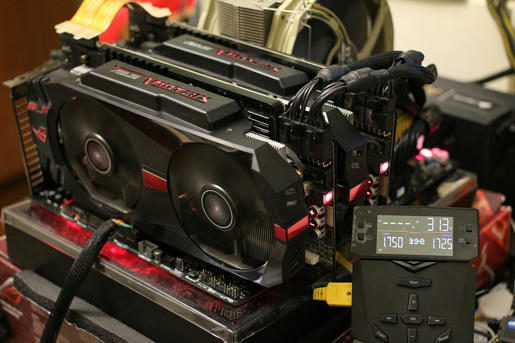
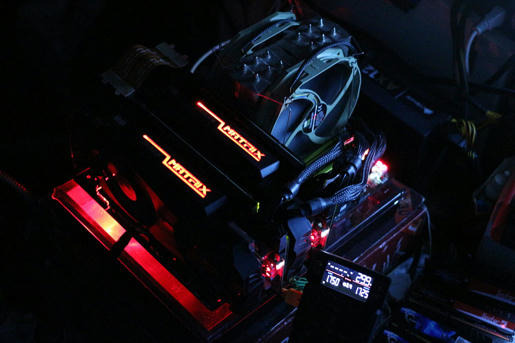
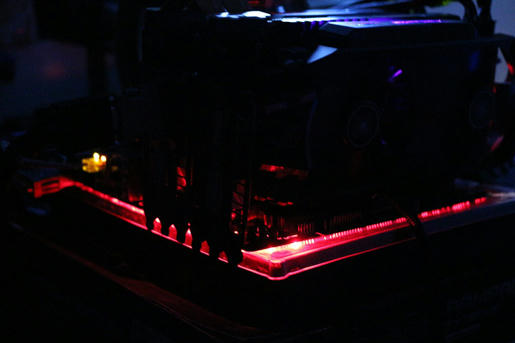
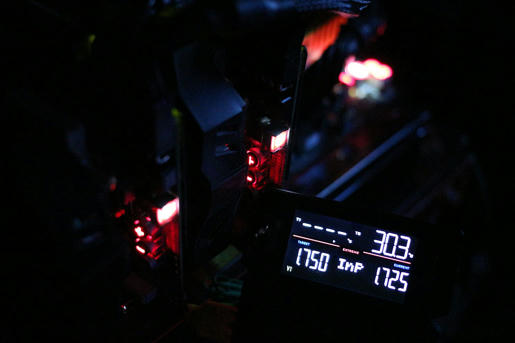
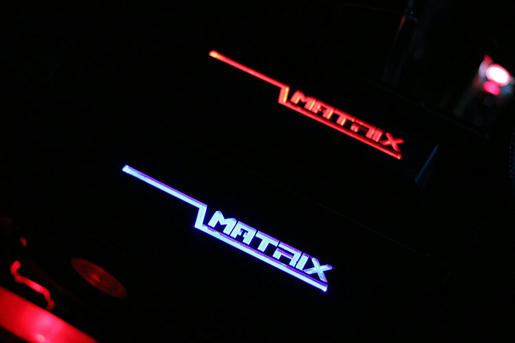




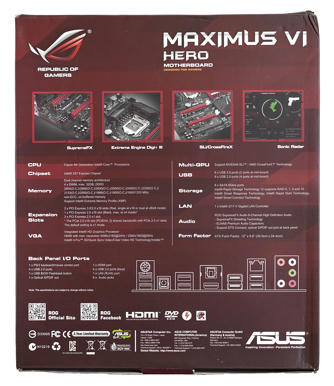
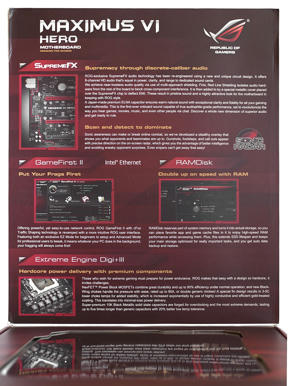
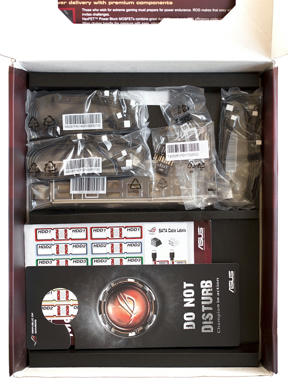
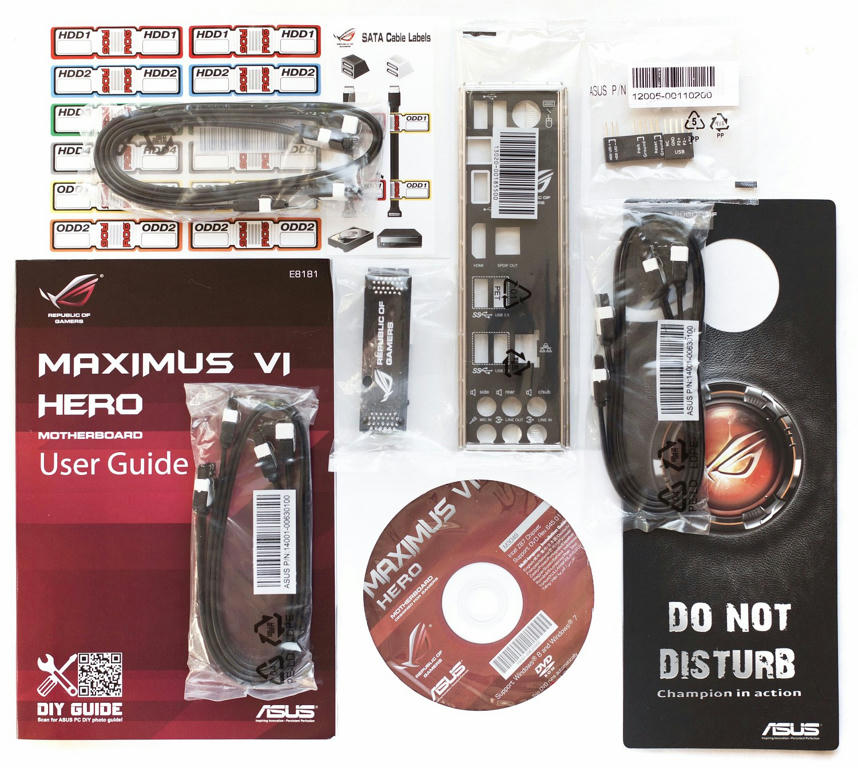
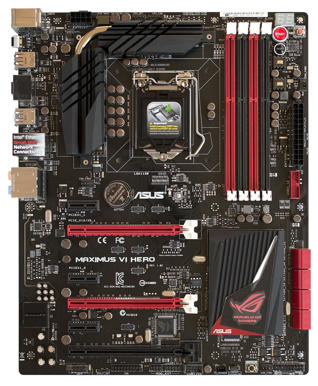
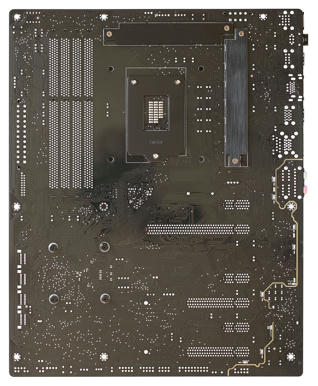
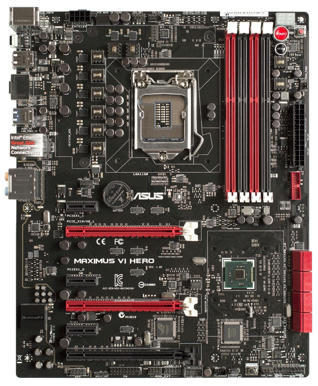
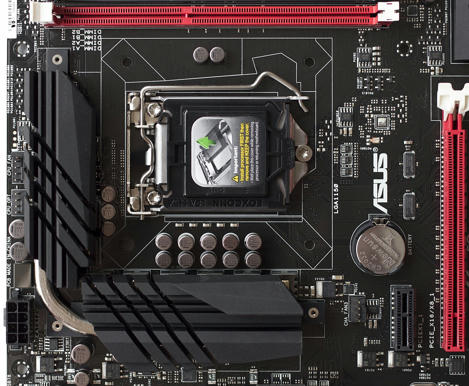
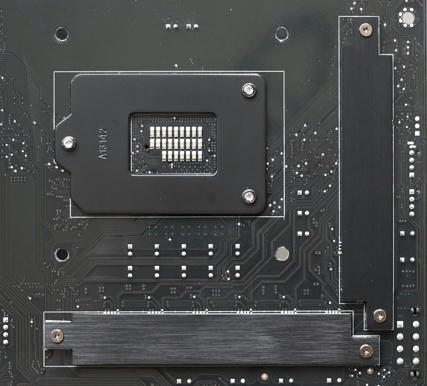
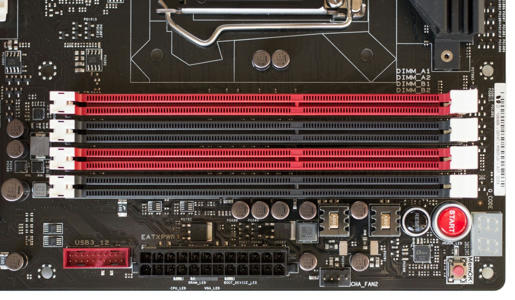
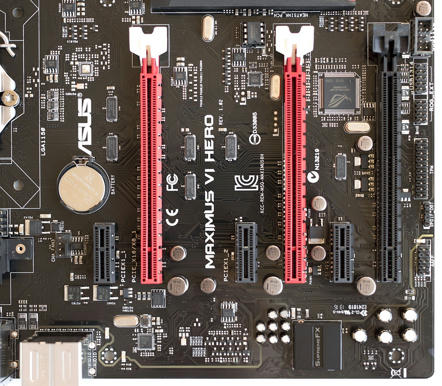
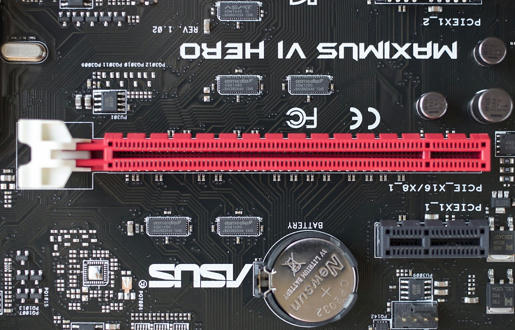
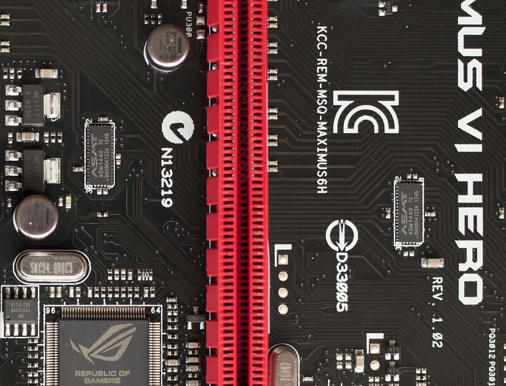

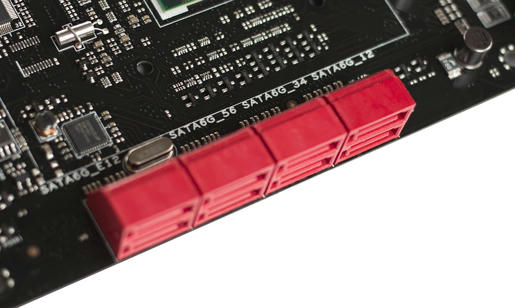
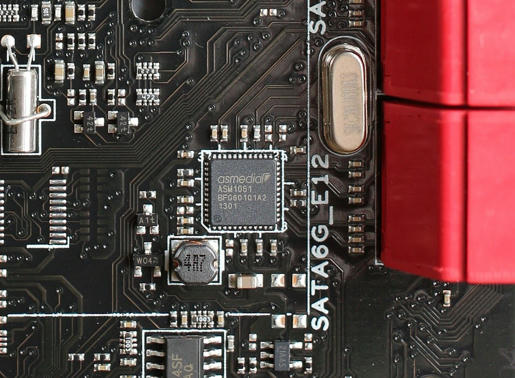
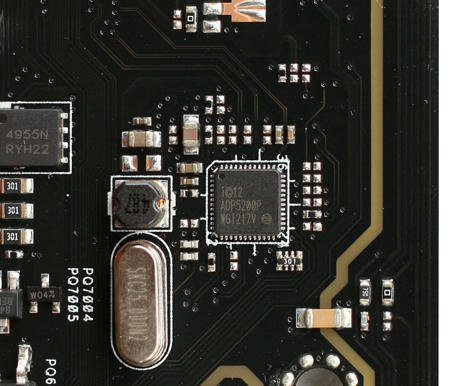
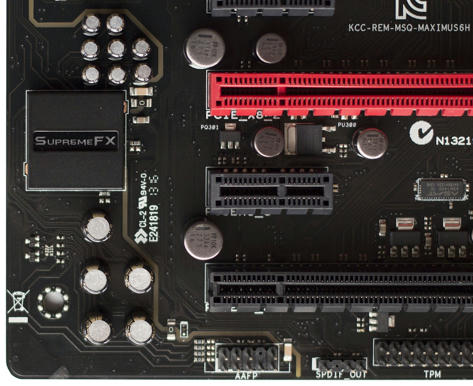
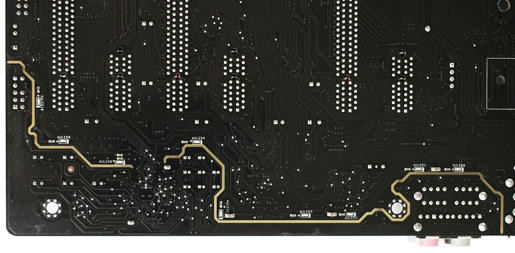
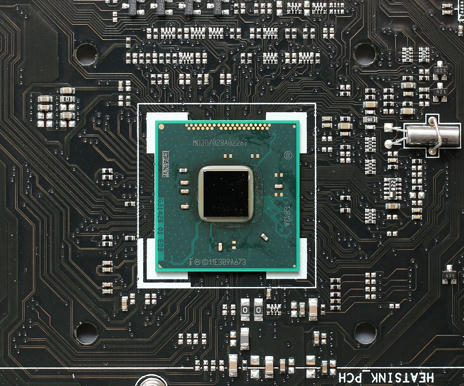
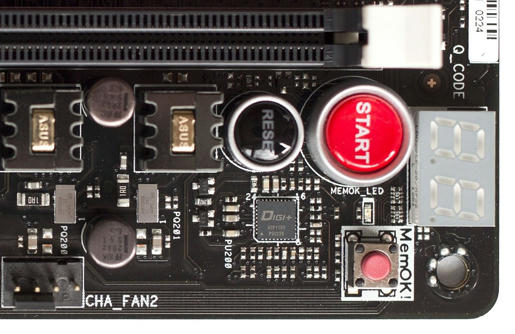
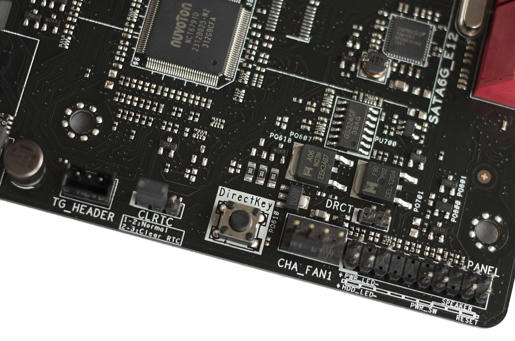
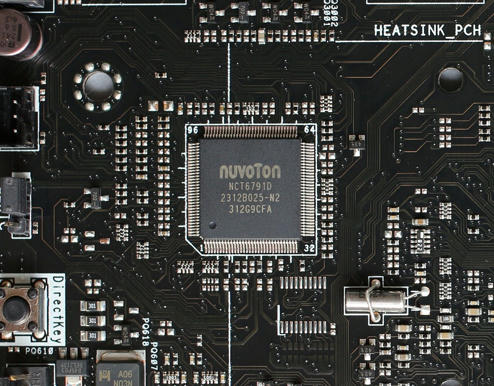
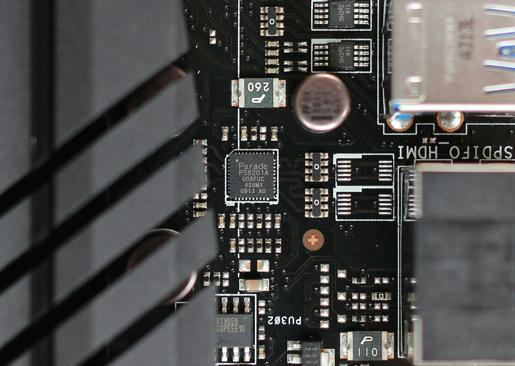
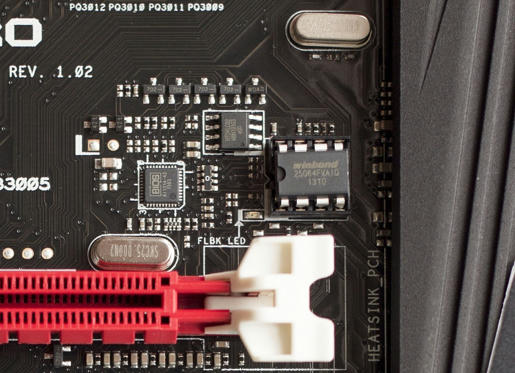
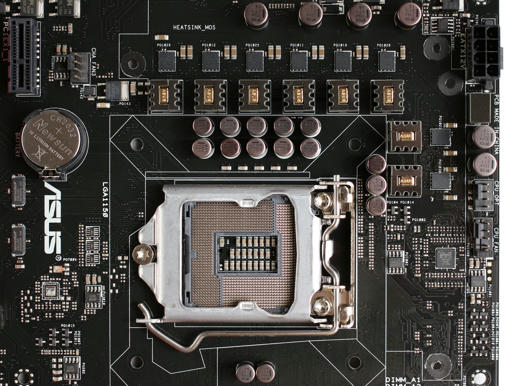
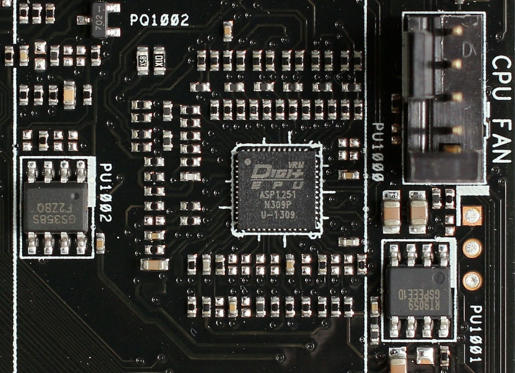
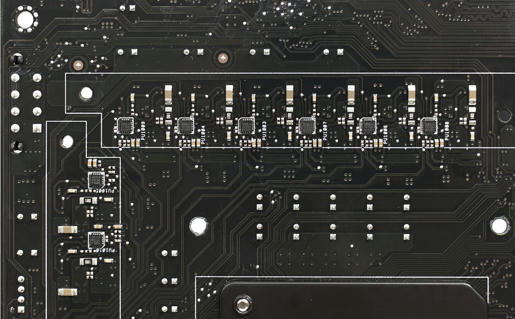
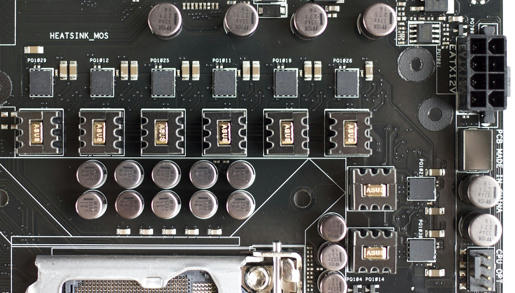
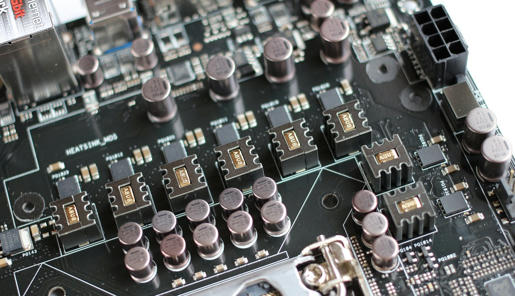
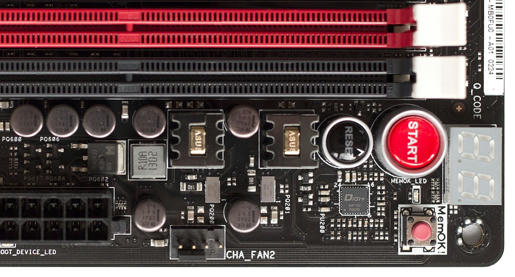
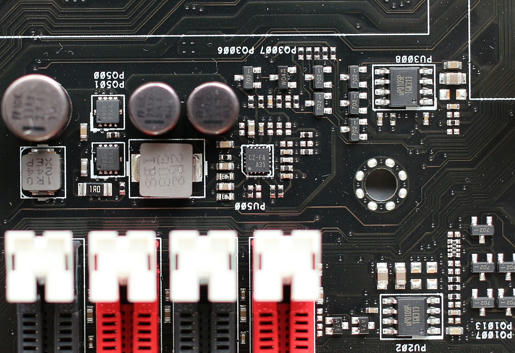
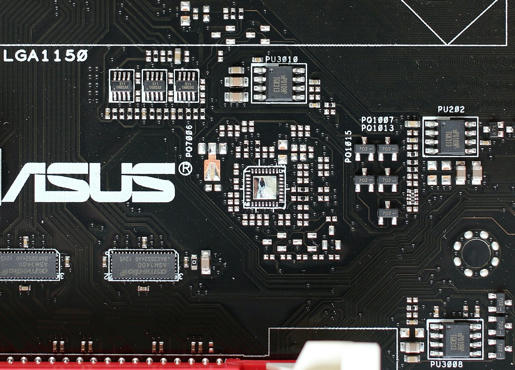
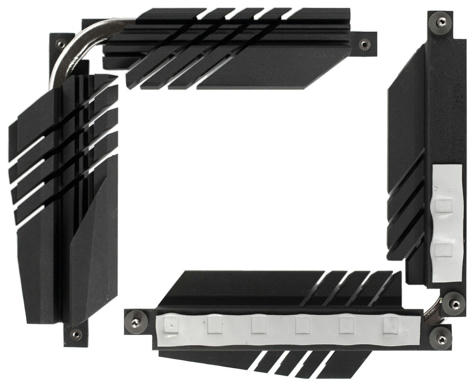
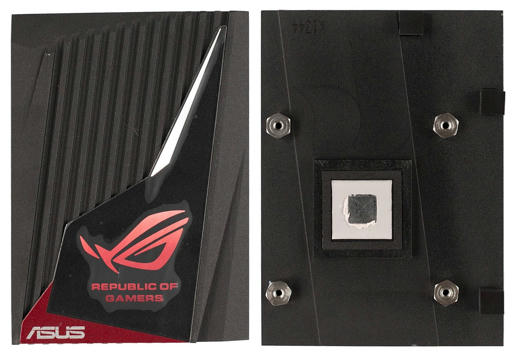
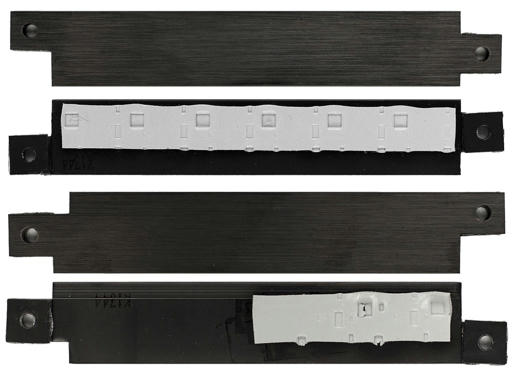
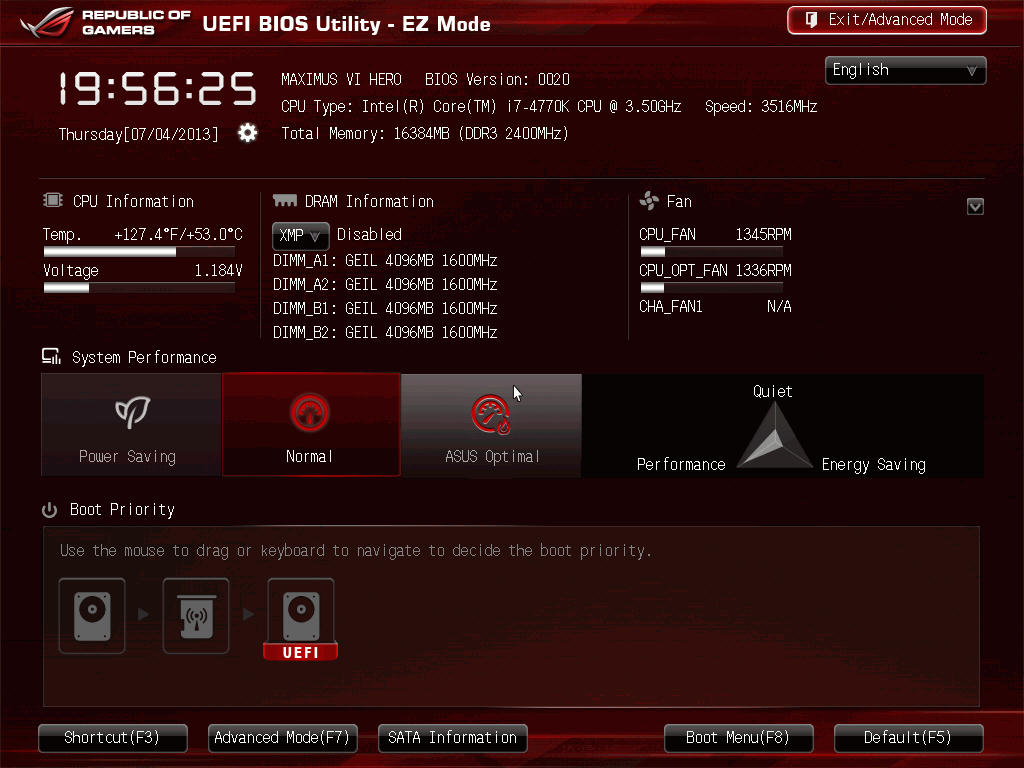
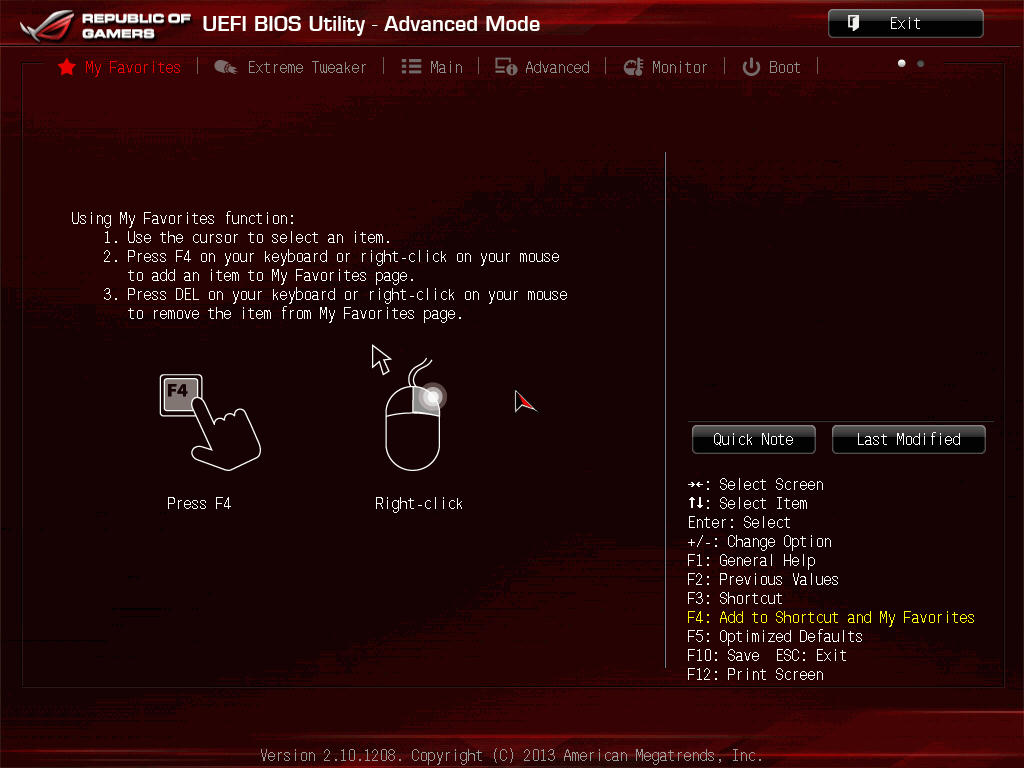
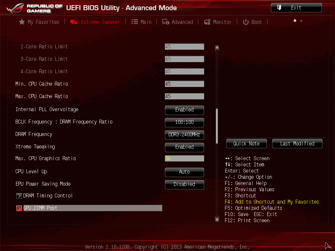
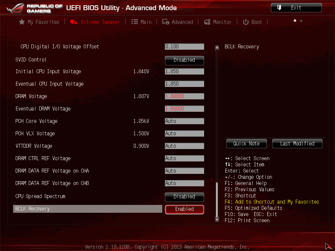
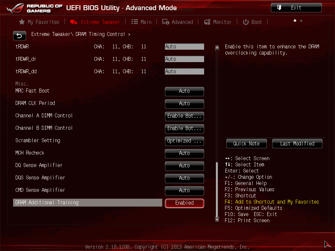
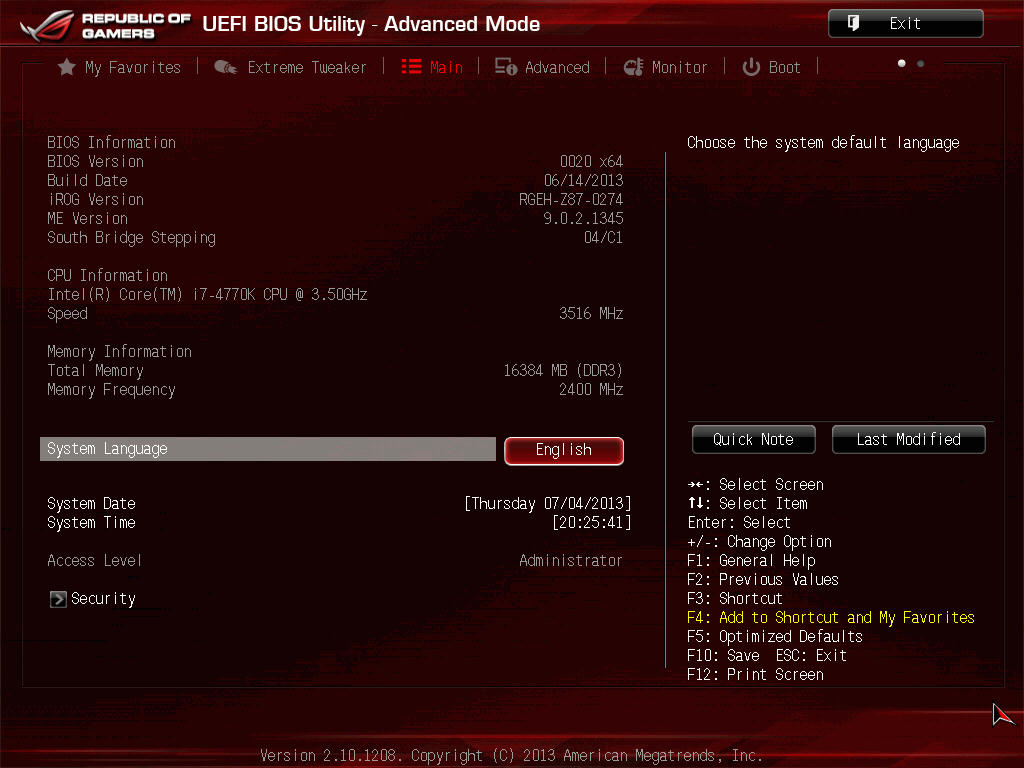
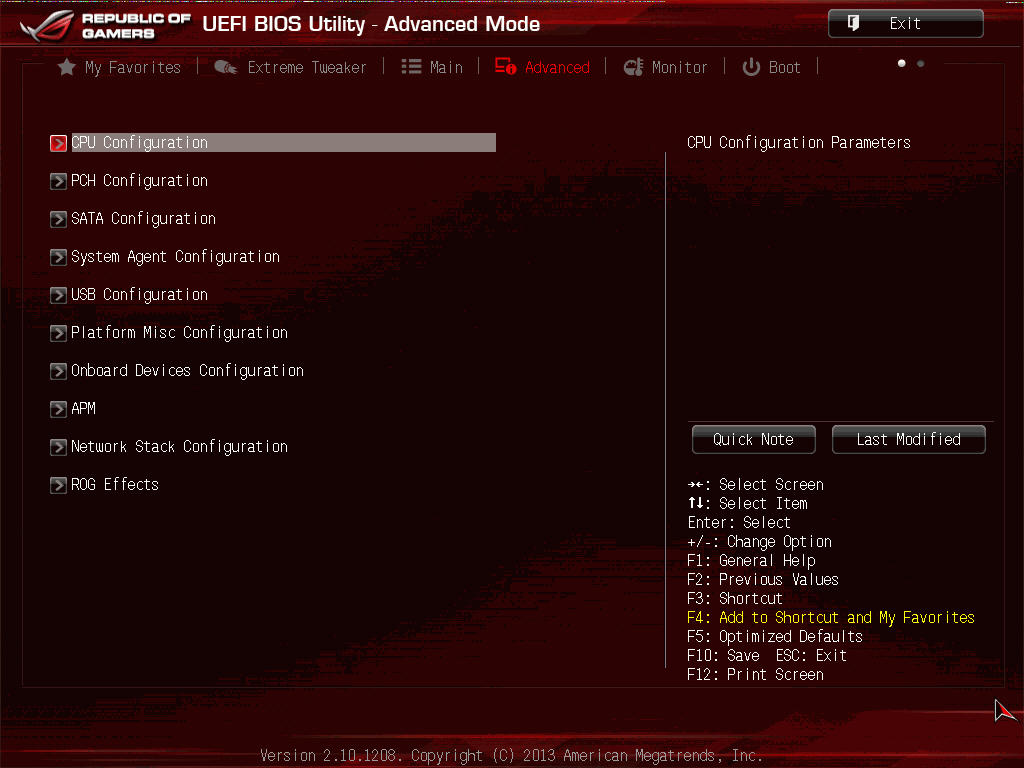
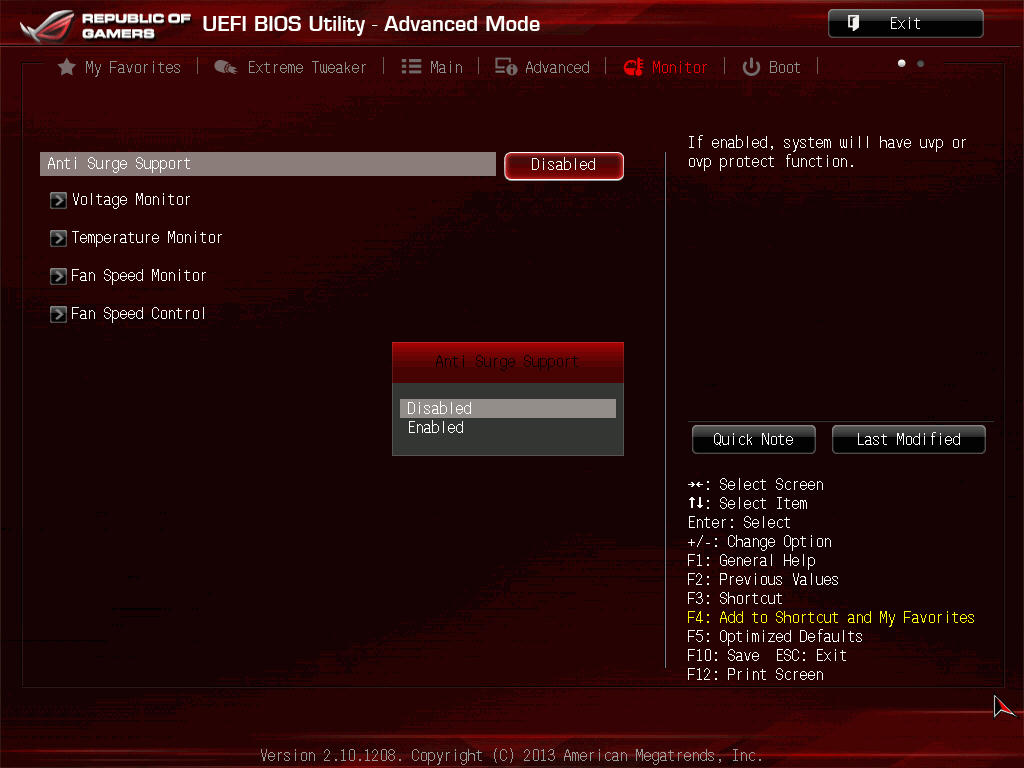
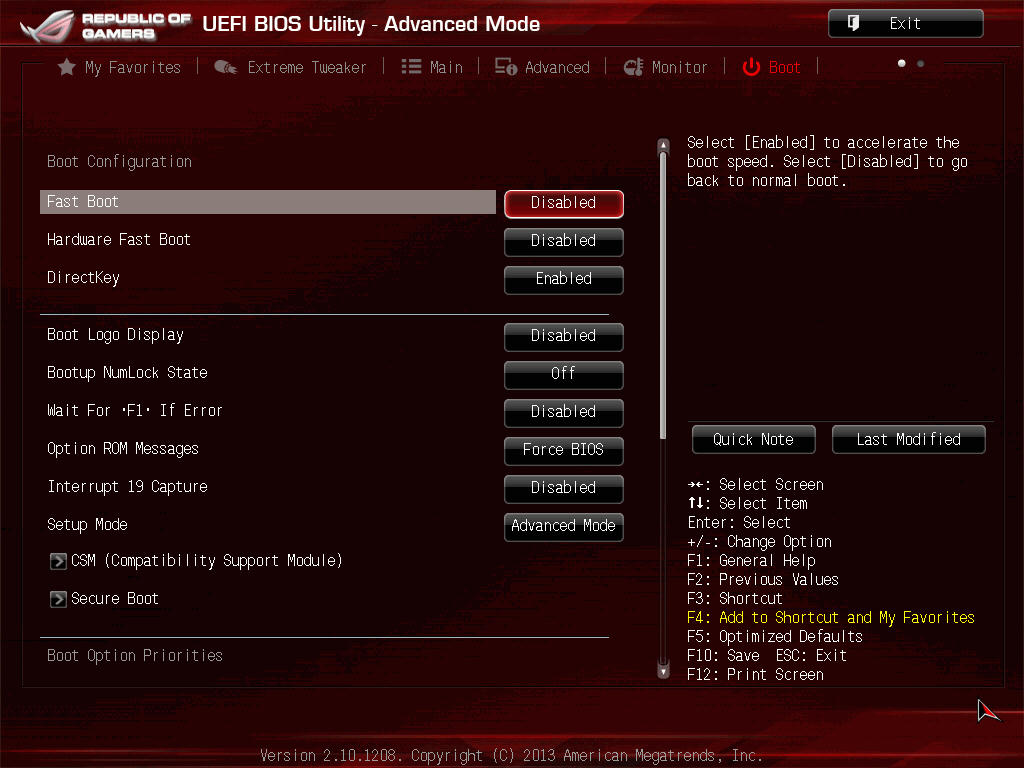
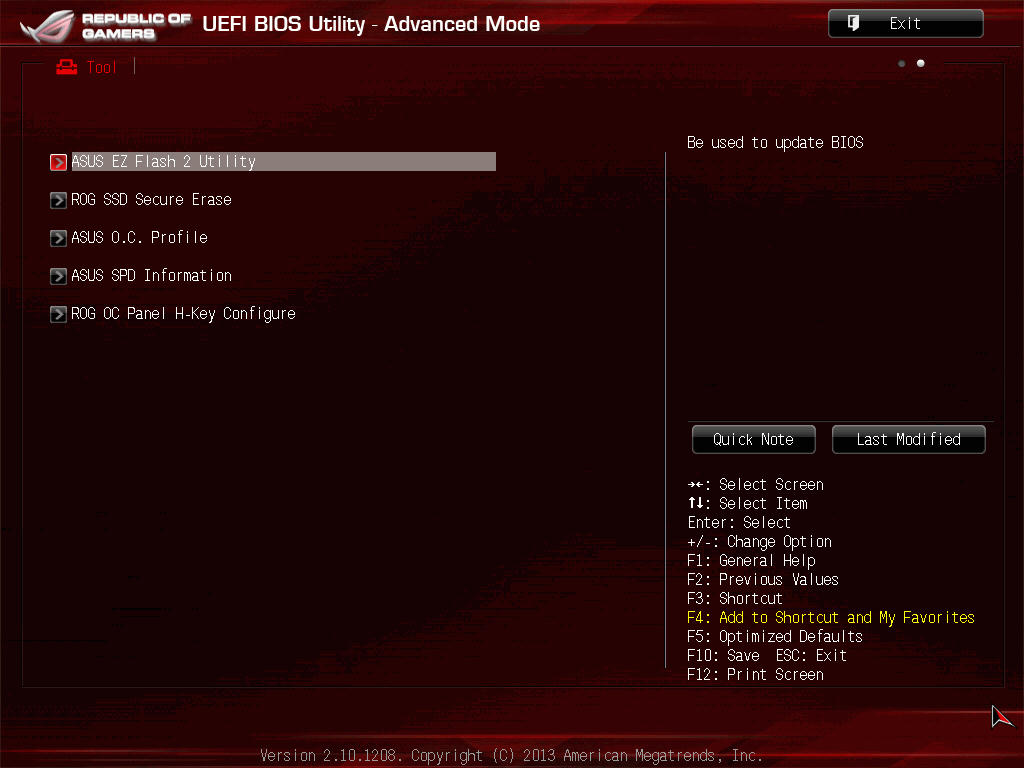
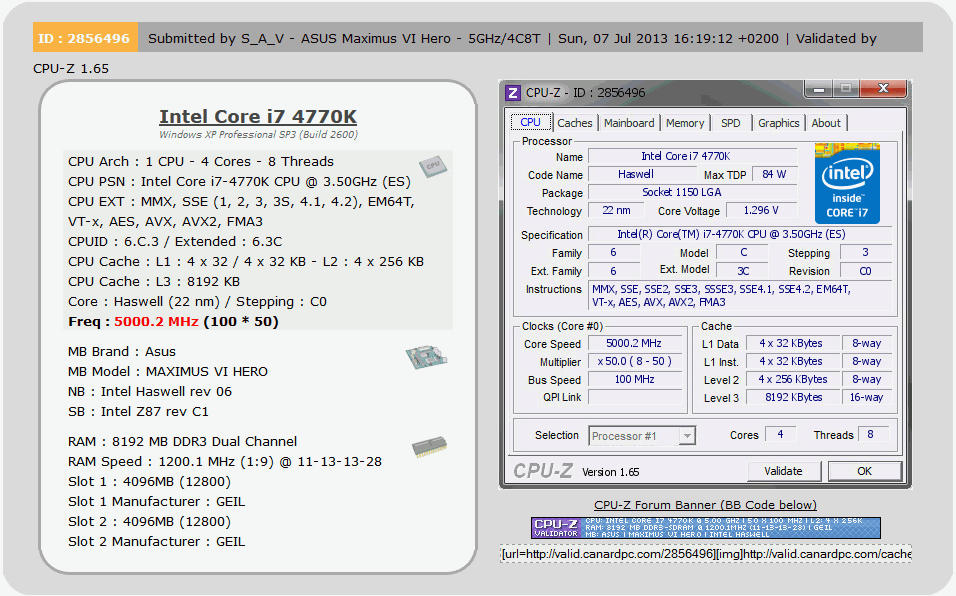
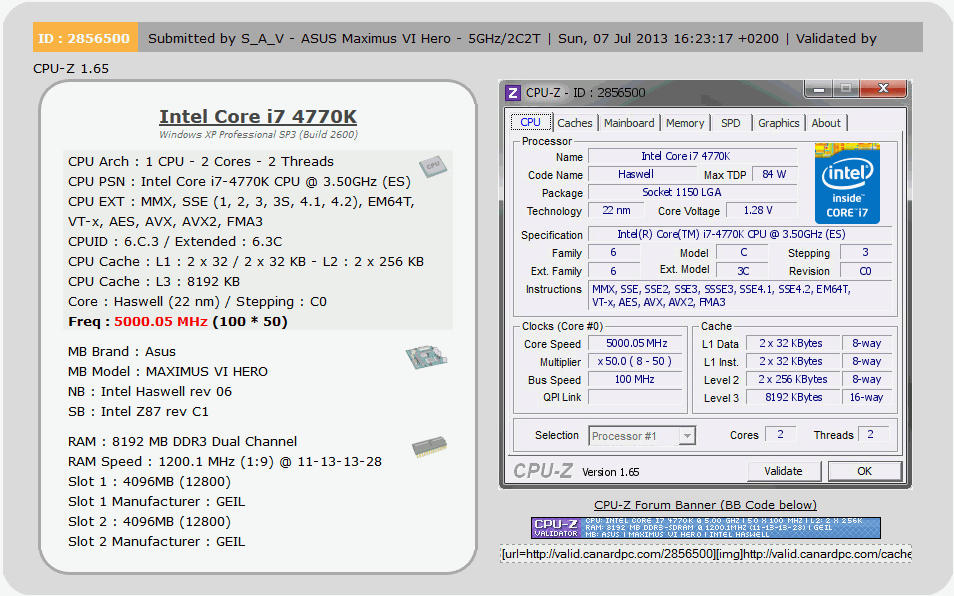
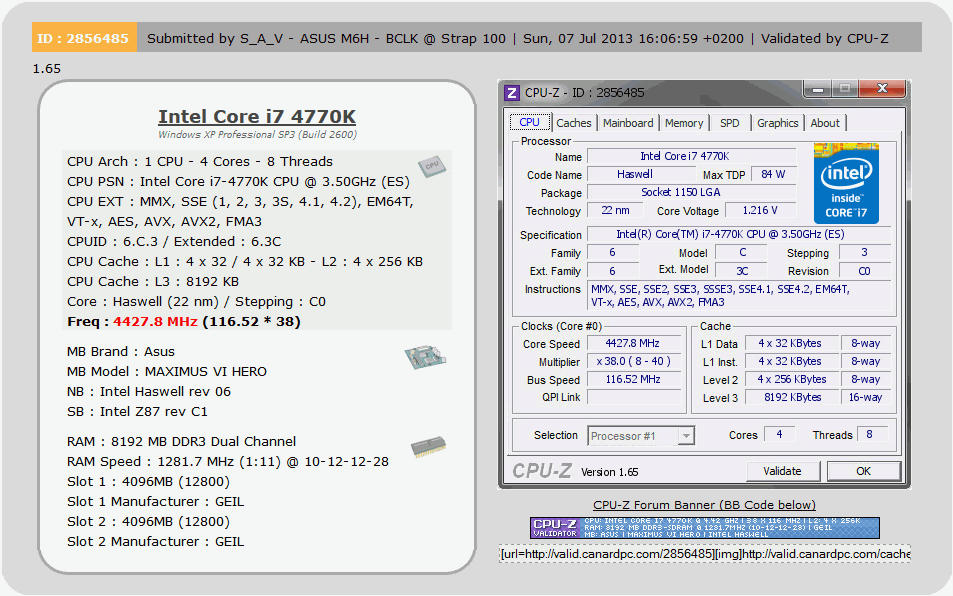
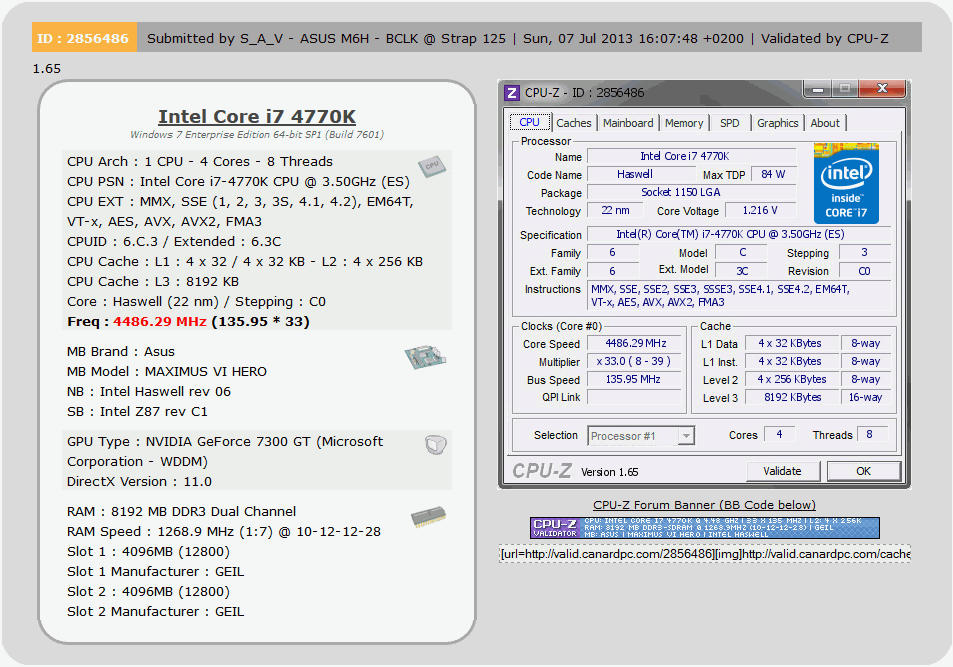
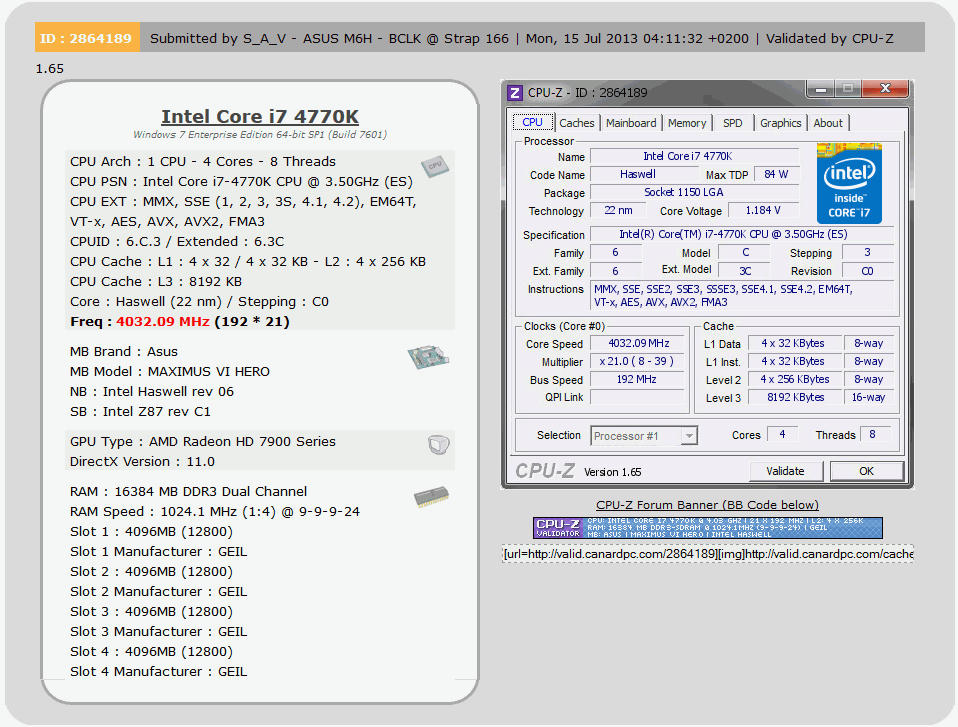
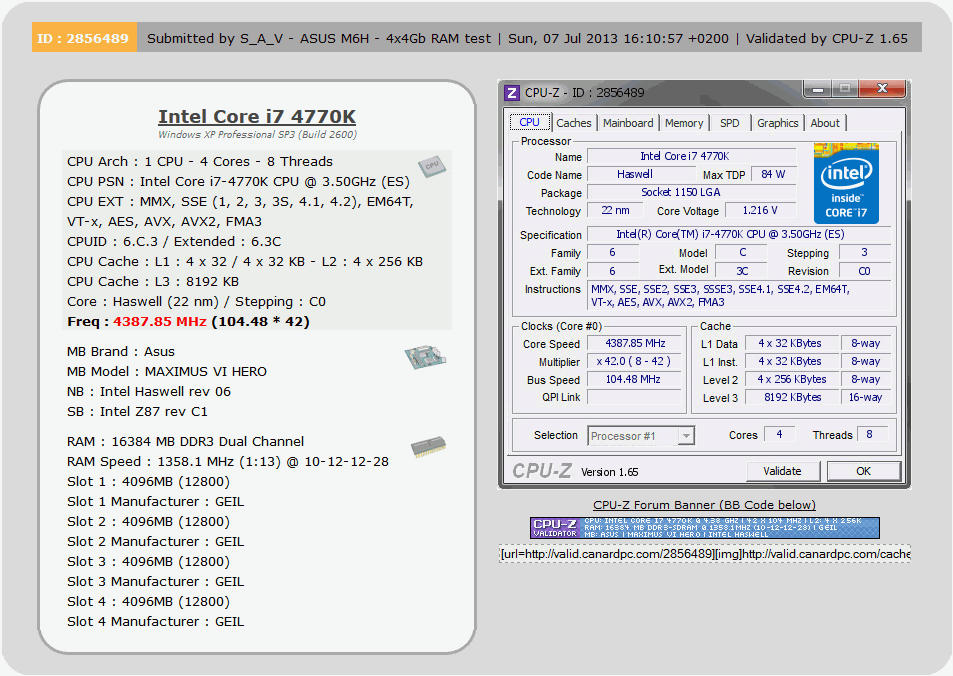
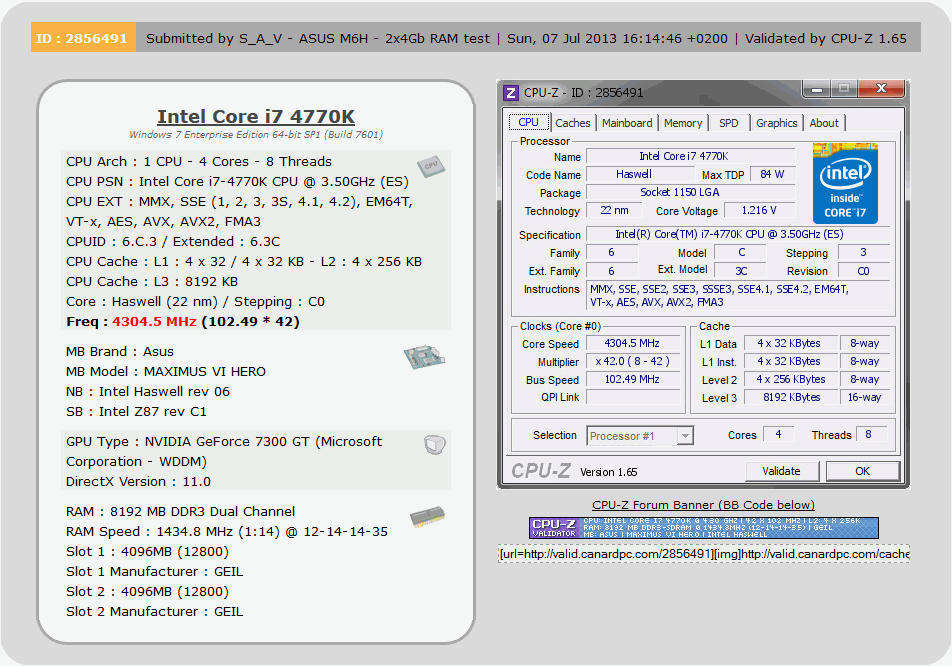
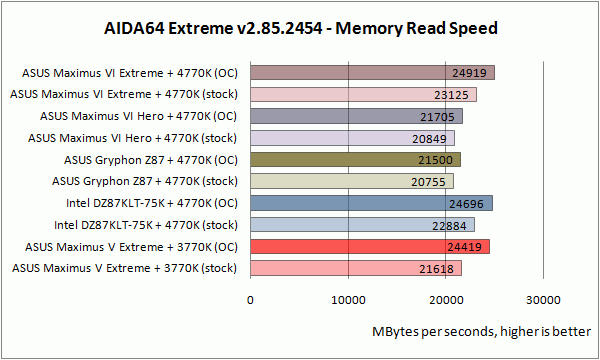
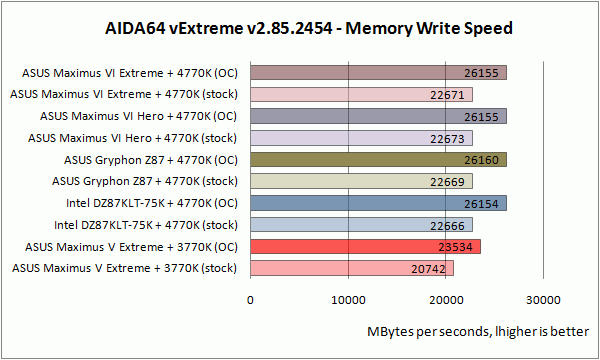
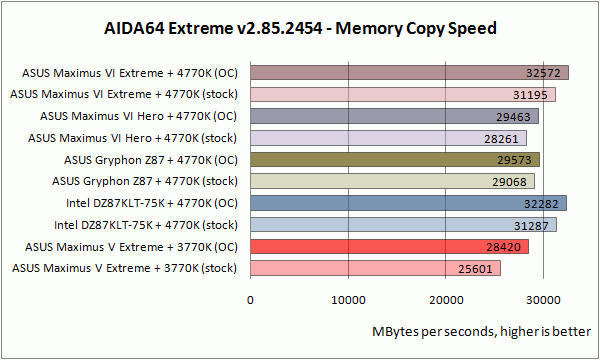
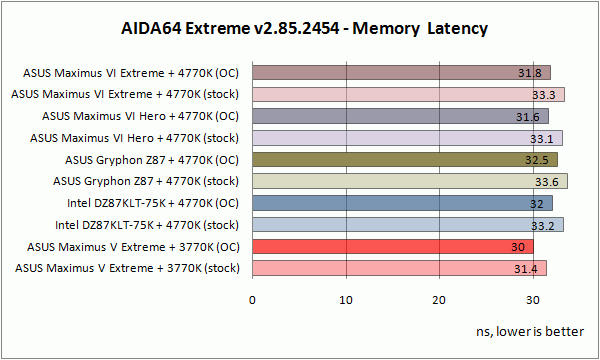
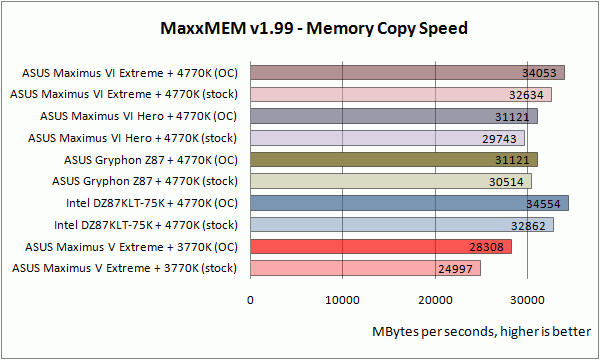
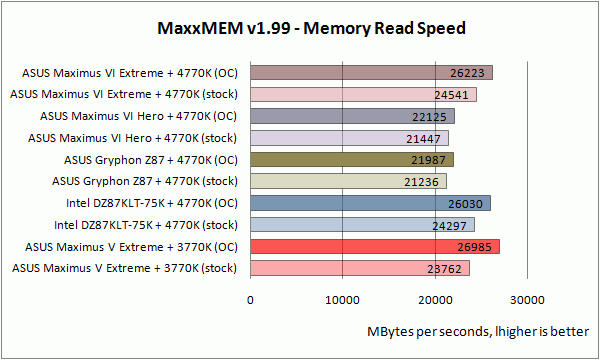
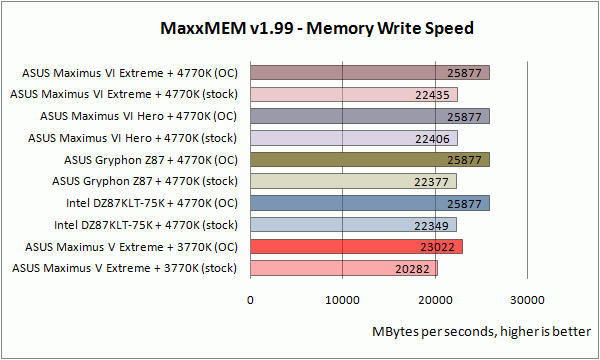
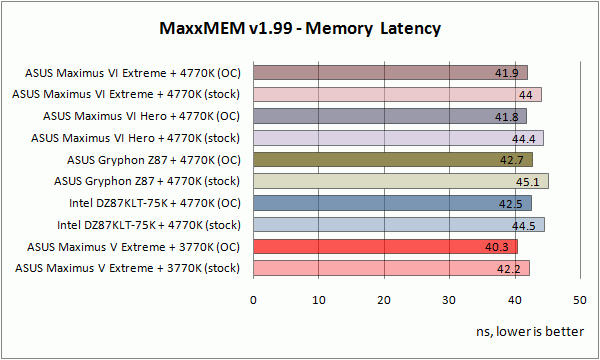
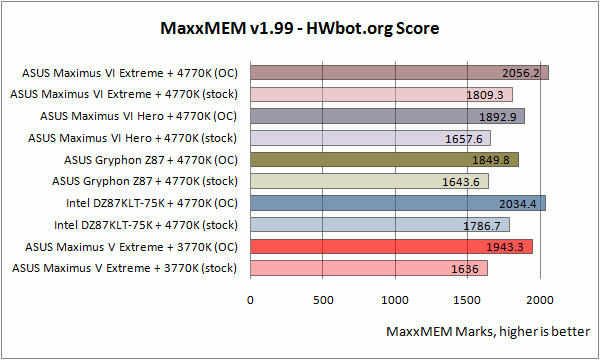
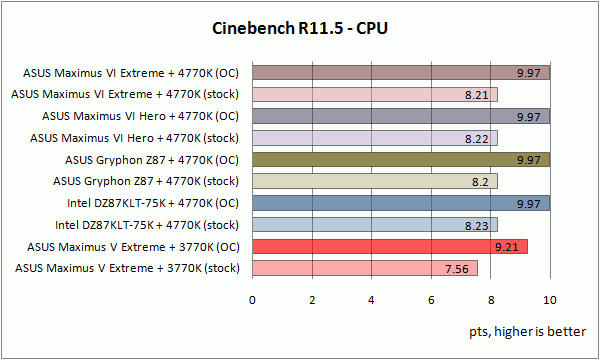
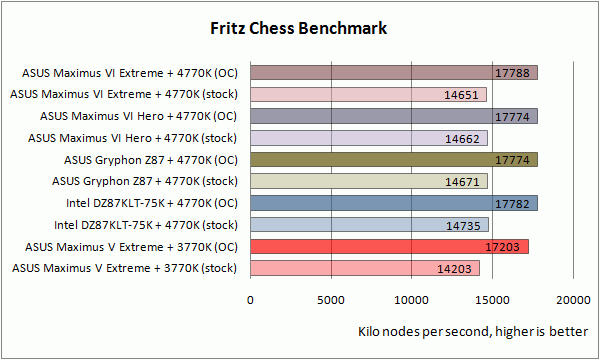

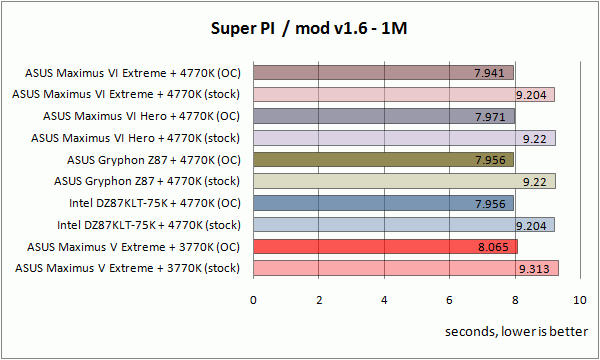
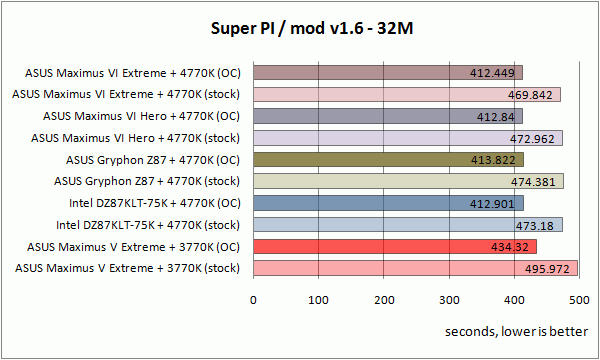
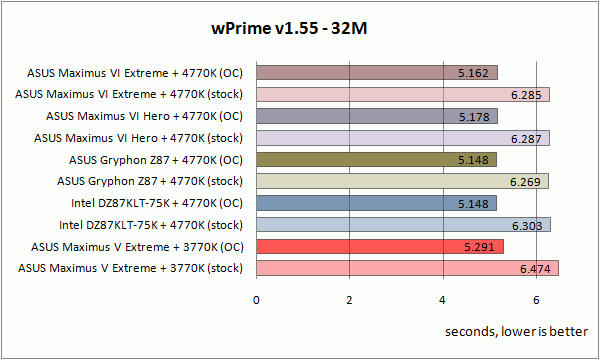
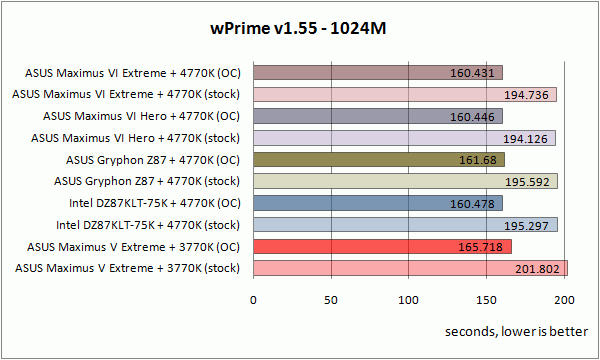
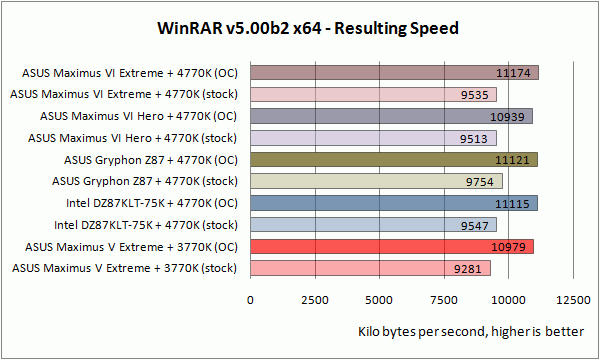
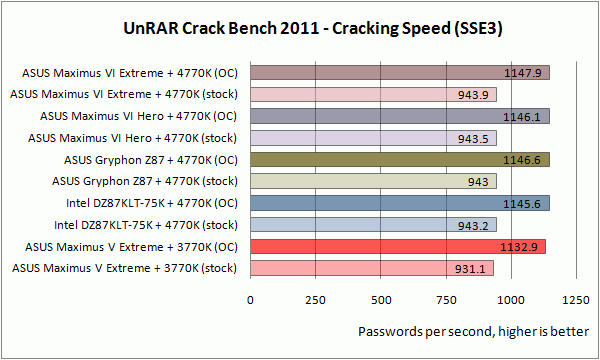
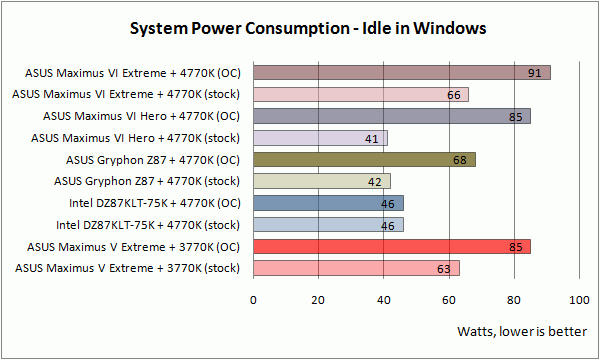
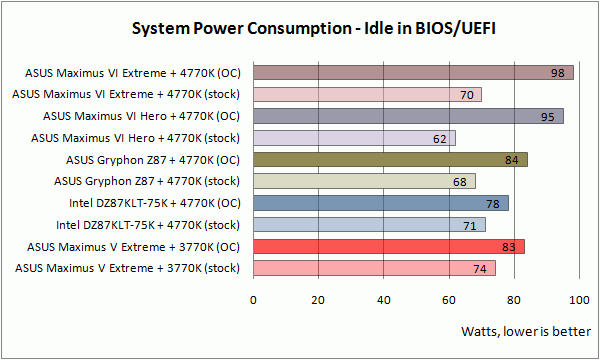
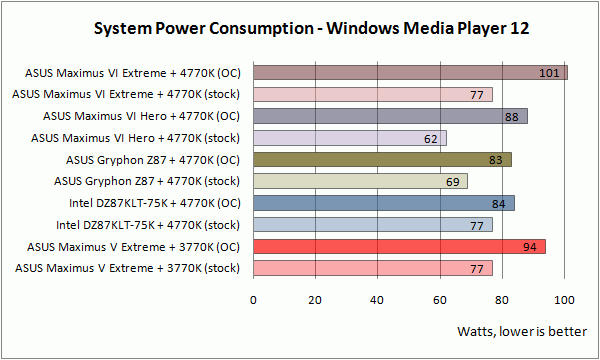
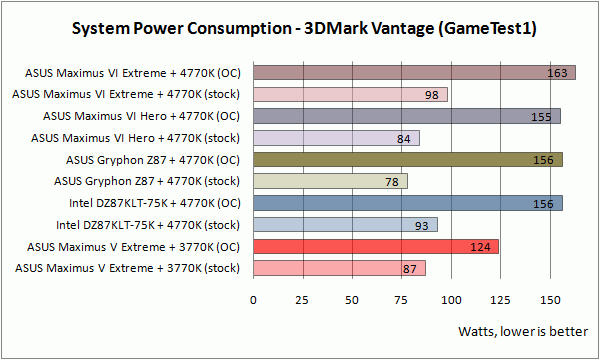
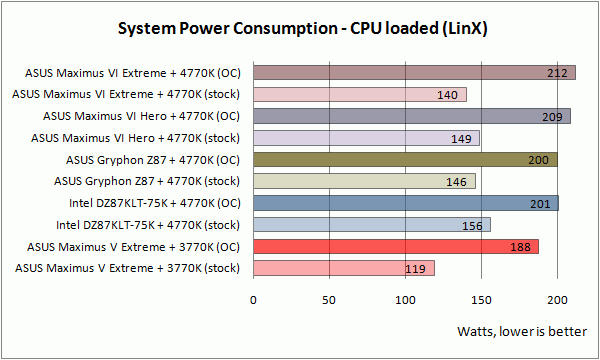
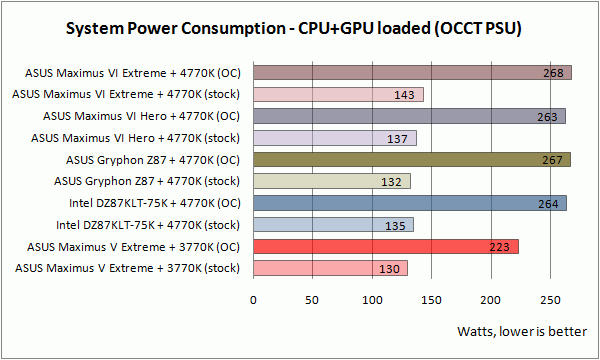
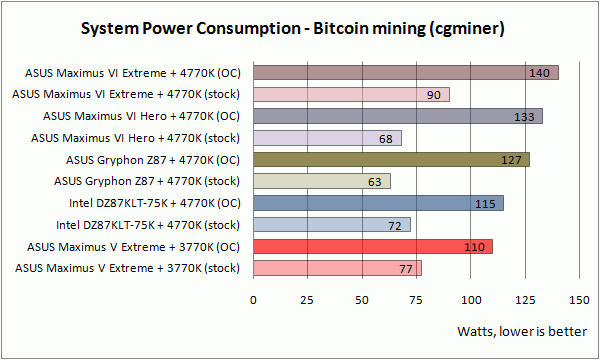
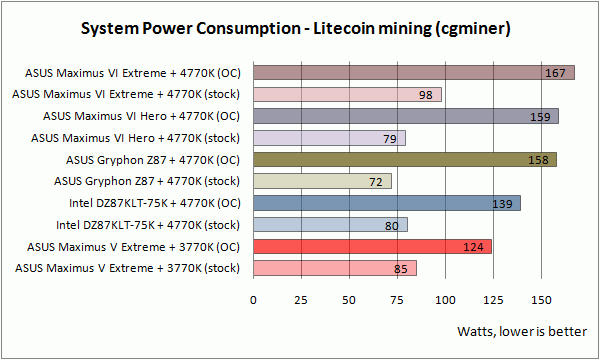
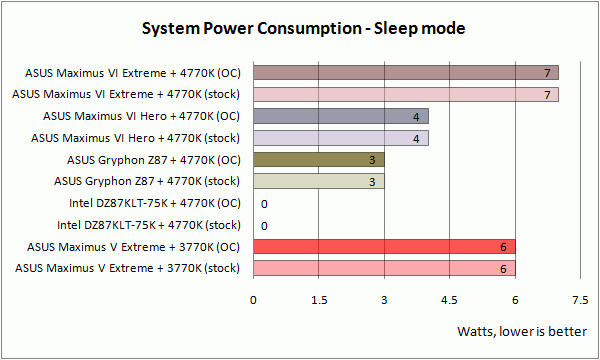
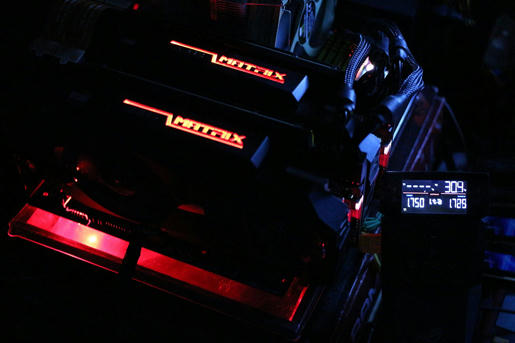
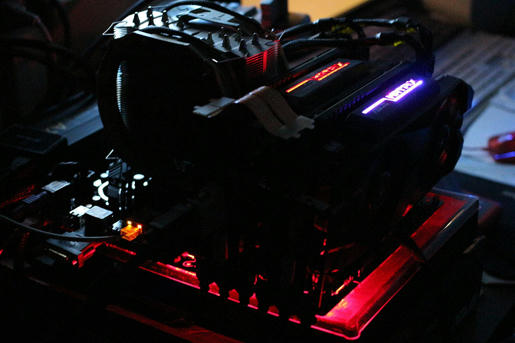
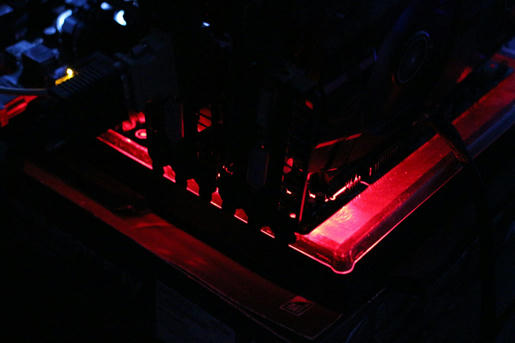


 Reply With Quote
Reply With Quote







Bookmarks